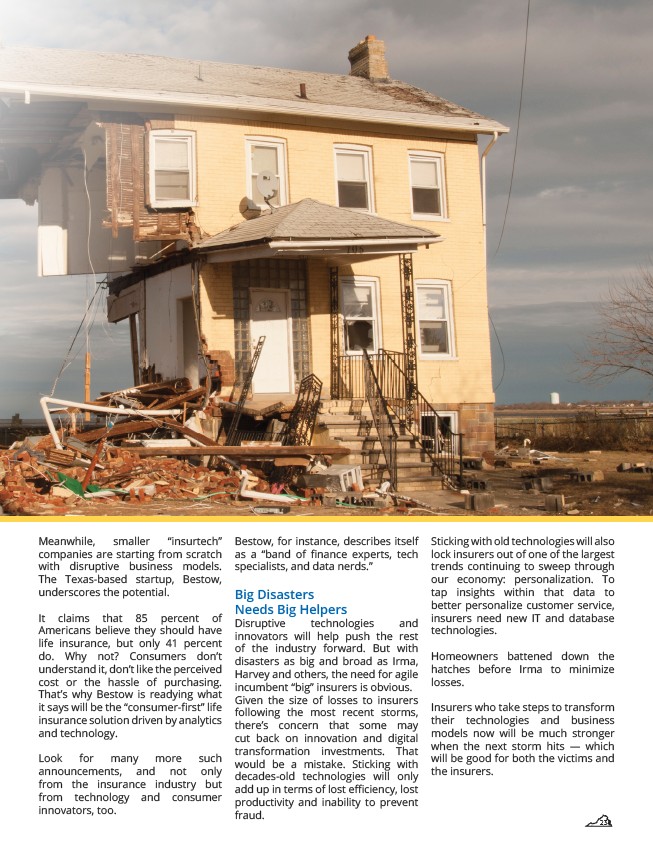
23
Meanwhile, smaller “insurtech”
companies are starting from scratch
with disruptive business models.
The Texas-based startup, Bestow,
underscores the potential.
It claims that 85 percent of
Americans believe they should have
life insurance, but only 41 percent
do. Why not? Consumers don’t
understand it, don’t like the perceived
cost or the hassle of purchasing.
That’s why Bestow is readying what
it says will be the “consumer-first” life
insurance solution driven by analytics
and technology.
Look for many more such
announcements, and not only
from the insurance industry but
from technology and consumer
innovators, too.
Bestow, for instance, describes itself
as a “band of finance experts, tech
specialists, and data nerds.”
Big Disasters
Needs Big Helpers
Disruptive technologies and
innovators will help push the rest
of the industry forward. But with
disasters as big and broad as Irma,
Harvey and others, the need for agile
incumbent “big” insurers is obvious.
Given the size of losses to insurers
following the most recent storms,
there’s concern that some may
cut back on innovation and digital
transformation investments. That
would be a mistake. Sticking with
decades-old technologies will only
add up in terms of lost efficiency, lost
productivity and inability to prevent
fraud.
Sticking with old technologies will also
lock insurers out of one of the largest
trends continuing to sweep through
our economy: personalization. To
tap insights within that data to
better personalize customer service,
insurers need new IT and database
technologies.
Homeowners battened down the
hatches before Irma to minimize
losses.
Insurers who take steps to transform
their technologies and business
models now will be much stronger
when the next storm hits — which
will be good for both the victims and
the insurers.